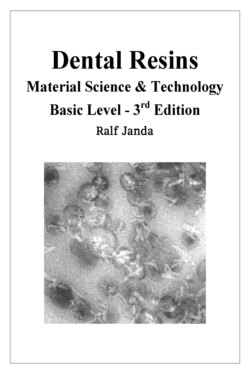Читать книгу Dental Resins - Material Science & Technology - Ralf Janda - Страница 8
На сайте Литреса книга снята с продажи.
ОглавлениеIntroduction
Besides of metals, alloys and ceramics plastics and composite resins have become to one of the most important material category in all areas of daily life such as engineering, electronics, building and construction industry, car industry and many other industries as well as in medicine and dentistry. In 1922 Hermann Staudinger discovered these high molecular compounds and called them macromolecules [84]. This was the start of a new until then unknown chemistry called polymer chemistry. The development of numerous polymeric materials and combinations thereof with other organic or inorganic substances or materials gave birth to a huge number of advanced materials with exceptional properties.
In the early years plastics were considered to be cheap and inferior materials but today composite resins and high performance plastics are very valuable and indispensable in all industries. The most important aspect for the resin materials’ breakthrough is certainly the fact that for nearly every usage custom-made, often also called tailor-made, products can be developed and finally provided. For sure, more and more new, until now unknown, resins or resin composites will be tailor-made for further or today even unknown applications in future.
Resin materials (plastics, composite plastics, composite resins, resin composites) are high molecular mass products (polymers). They are manufactured by transformation of naturally occurring or by synthesis from low molecular mass substances (monomers). These low molecular mass substances (monomers) are the smallest multiple recurring units building the high molecular mass substances (polymers). The properties of each of the resulting polymers depend on how the monomers are linked, on their chemical structure as well as on the spatial configuration of the formed macromolecules. Polymers or macromolecules do not have an exact but an average molecular mass because the single chains building the polymer/macromolecule are growing randomly and not in a well-defined manner.
